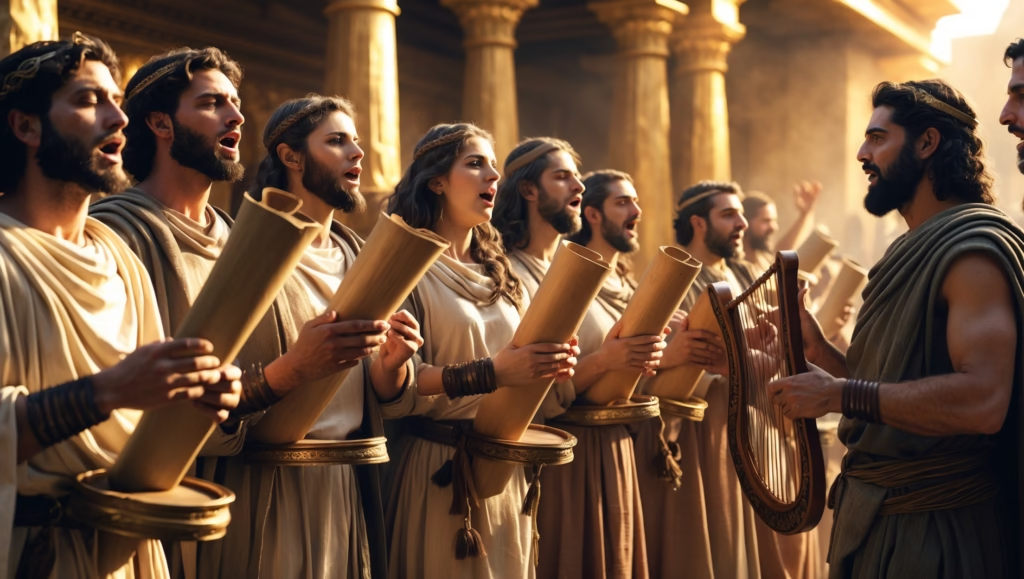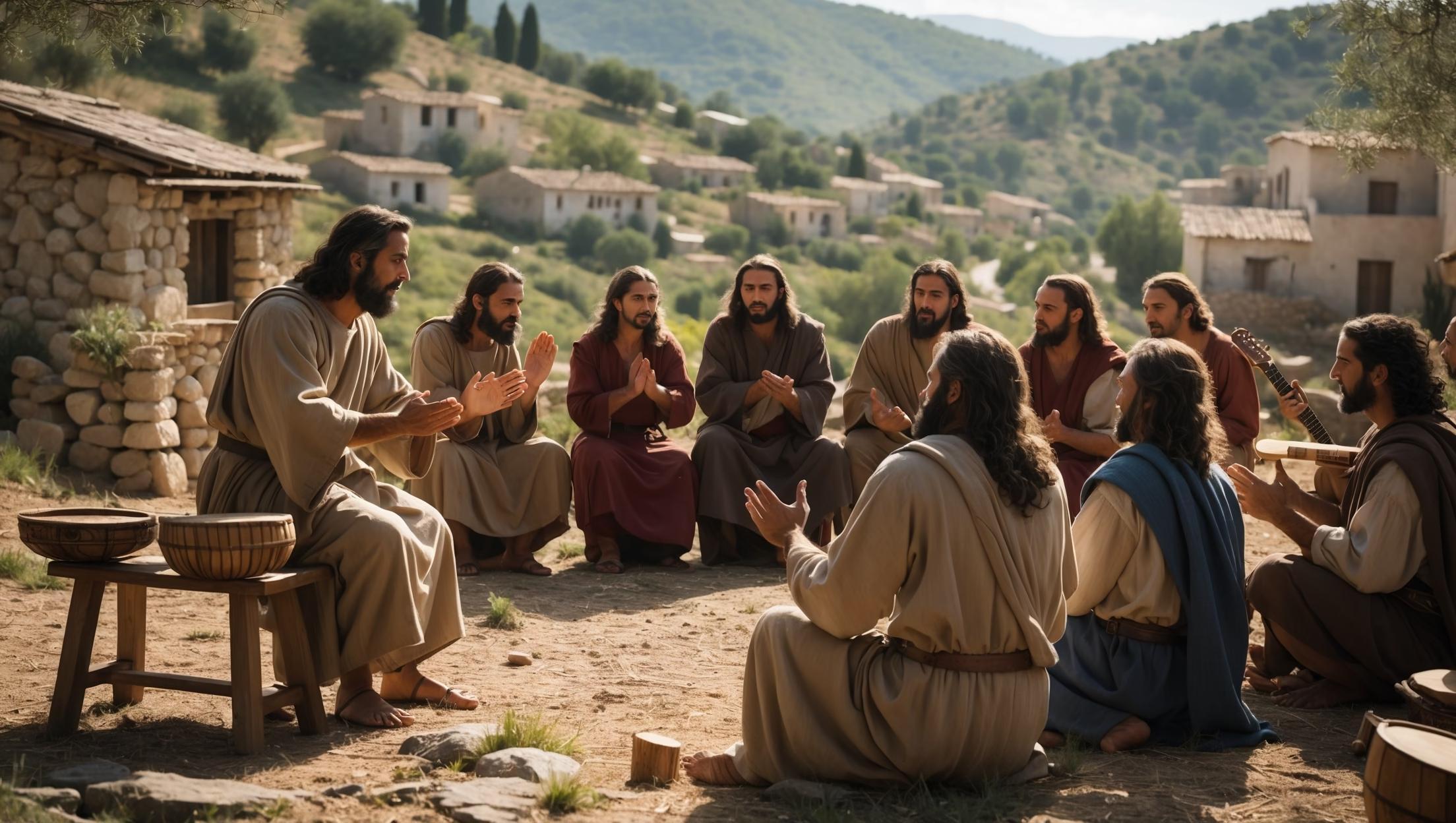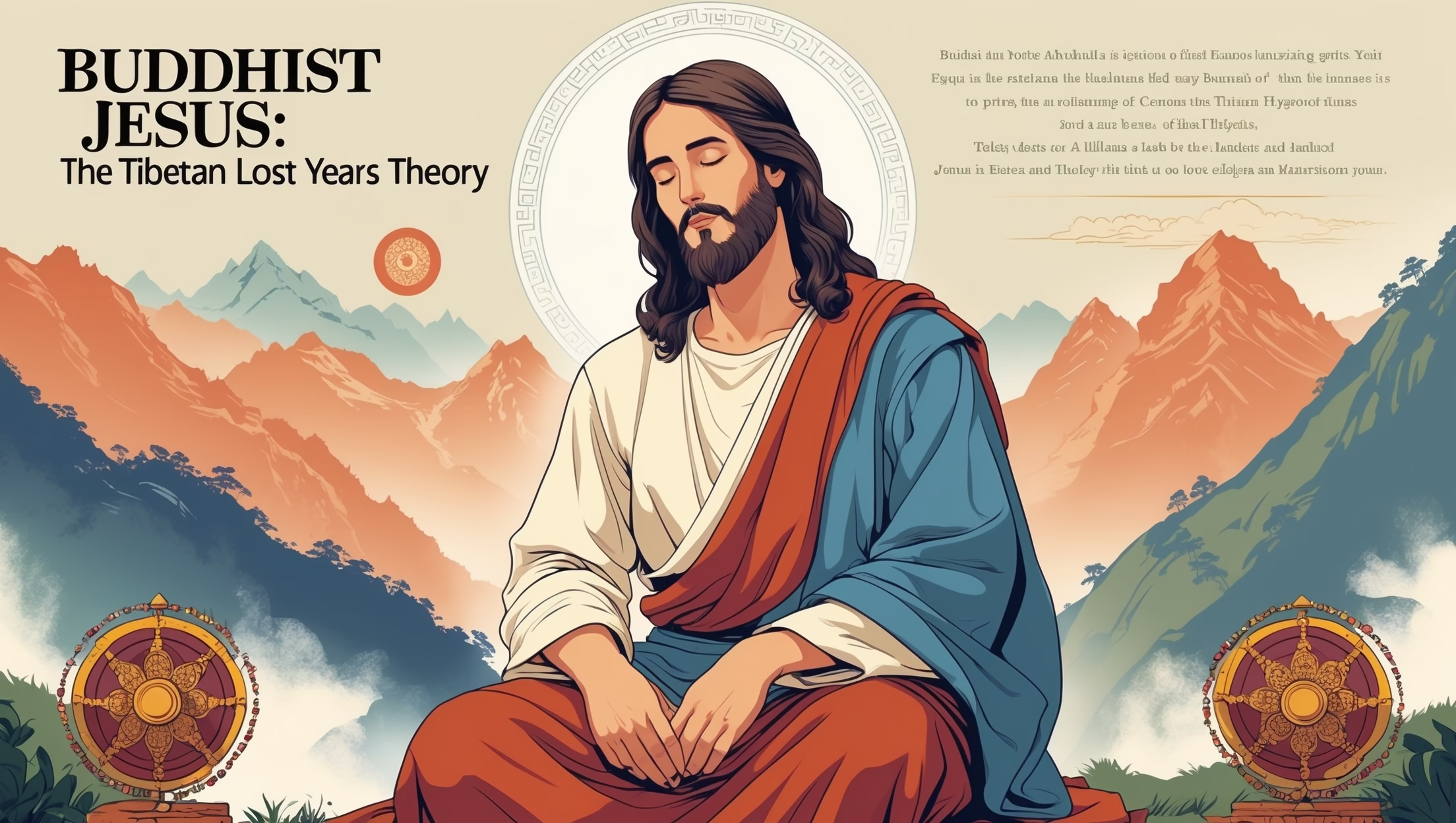The Soundtrack of the Messiah’s Life
When we think of Jesus’ ministry, we often focus on His teachings, miracles, and parables. Yet, music played a meaningful role in His life and the life of early believers. Songs, hymns, and psalms were not merely aesthetic—they were theological expressions, communal connectors, and spiritual practices that shaped worship in first-century Palestine.

Biblical Evidence of Jesus’ Musical Engagement
Singing at the Last Supper
Mark 14:26 records that Jesus and His disciples sang a hymn after the Passover meal. Singing together was more than ritual—it reinforced communal identity, spiritual focus, and theological reflection on God’s promises. This act demonstrates that music was integrated into His most sacred moments.
Hymns After Miracles
Though not explicitly stated, events such as the feeding of the 5,000 (John 6:11) imply musical or spoken praise. Early Jewish culture often accompanied communal meals with psalms or hymns of thanksgiving. Jesus’ ministry occurred within this rich musical environment, where song reinforced memory, meaning, and communal joy.
Ancient Musicology Context
Temple Choir Traditions
The Jerusalem Temple employed skilled choirs and musicians to accompany sacrifices and festivals. Psalms were sung in structured call-and-response patterns, blending poetry and melody. Jesus would have been immersed in these traditions, internalizing rhythms and phrasing from a young age.
Galilean Folk Influences
Beyond the Temple, Jesus lived in Galilee, where local folk music, instruments like the lyre or tambourine, and oral storytelling shaped cultural life. His parables, often rhythmic and memorable, may have reflected these musical cadences, aiding recall and teaching effectiveness.
3rd-Century Hymn Evidence
The Oxyrhynchus Hymn fragment (3rd century CE) preserves early Christian melodic notation, offering a glimpse into the musical language of Jesus’ followers. While composed after His lifetime, it reflects continuity with first-century hymn traditions inspired by His ministry.
Music in Modern Worship
Historical Continuity
From Gregorian chant to contemporary worship bands, Christian music retains roots in the psalms and hymns Jesus would have known. Liturgical music carries theological meaning, communal memory, and spiritual reflection—echoing the functions of music in His era.
The “Jesus Music” Revolution
In the 1970s, the Jesus Music movement in the United States blended folk, rock, and gospel to create spiritual songs accessible to a wide audience. This demonstrates the enduring power of musical innovation to convey faith across cultures and generations.
Global Worship Practices
Today, Hillsong, Taizé, and other contemporary movements continue to explore music as a spiritual vehicle, emphasizing emotional engagement, communal participation, and theological reflection—all aspects deeply connected to Jesus’ original ministry context.
Key Insight: Music as Theology in Action
Jesus’ use of psalms, hymns, and spiritual songs reveals that worship is holistic, engaging mind, heart, and voice. Music functioned as teaching, praise, and communal formation. By exploring the musical dimension of His life, modern believers can reconnect with a fully embodied spirituality—one that communicates theology not only in words but through melody, rhythm, and harmony.









